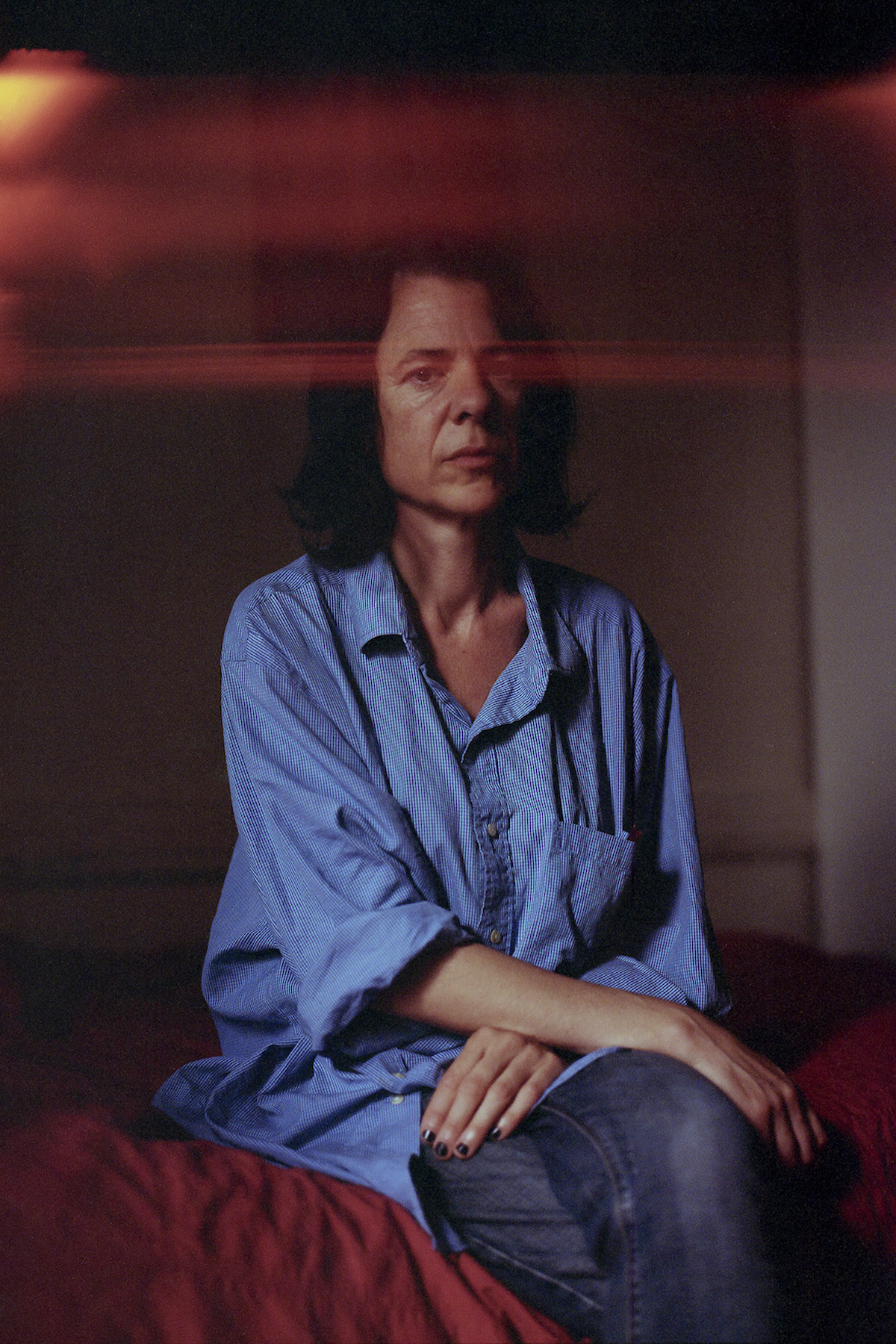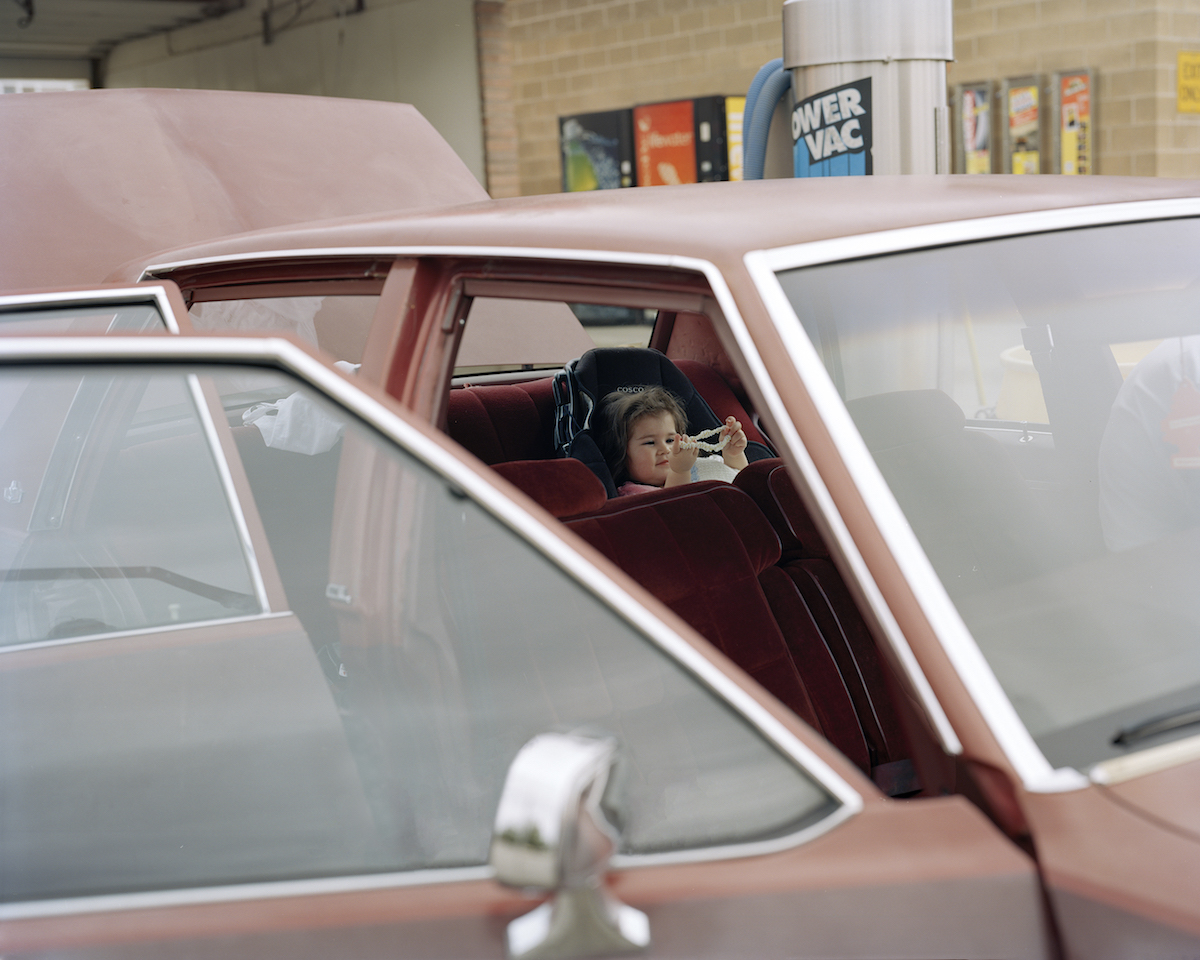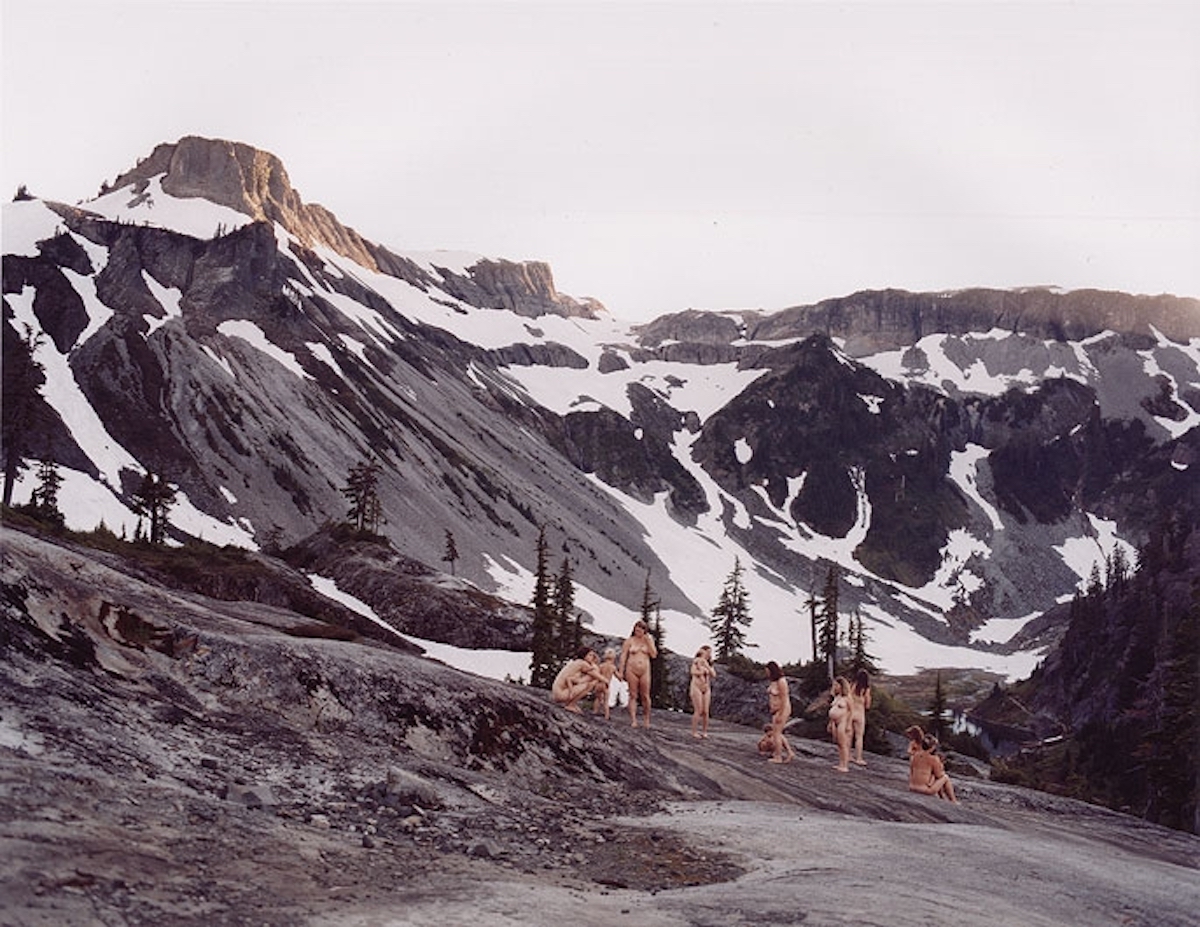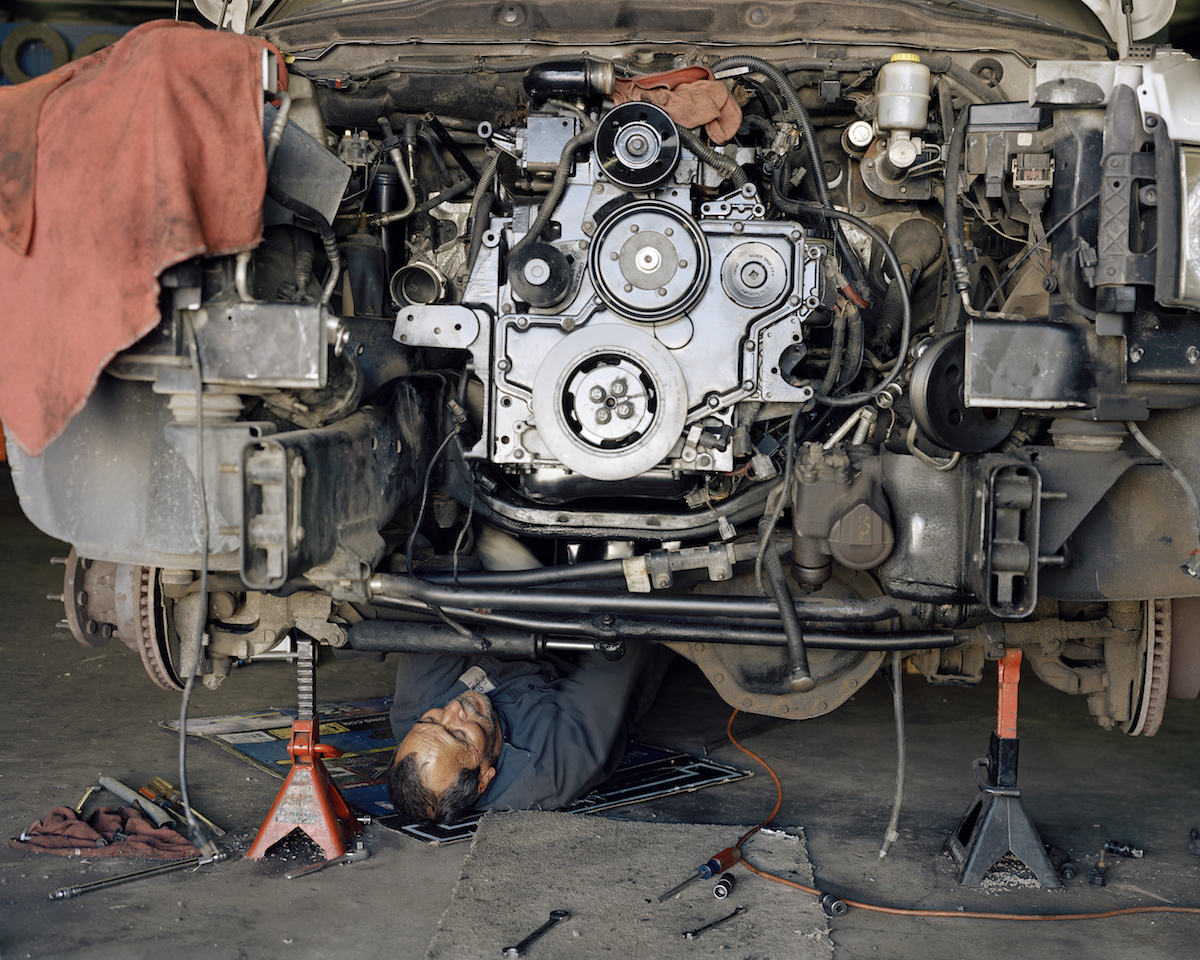Freedom and Photography: An interview with Photographer Justine Kurland
Art — 11.01.18
 Justine Kurland was our thesis professor at Parsons. To say that Lili and I were excited to have interviewed her in her home is an understatement. The 2018 list of artists to be awarded a ‘Light Work Residency’ was announced and Justine was one of those artists. Previous artists include people like Carrie Mae Weems, Deana Lawson, Hank Willis Thomas and Zanele Muholi.
Justine Kurland was our thesis professor at Parsons. To say that Lili and I were excited to have interviewed her in her home is an understatement. The 2018 list of artists to be awarded a ‘Light Work Residency’ was announced and Justine was one of those artists. Previous artists include people like Carrie Mae Weems, Deana Lawson, Hank Willis Thomas and Zanele Muholi.
Justine’s book ‘Highway Kind’ (published by Aperture) was fawned over by all of her students both Parsons grads, and her MFA ICP (International Center of Photography). At the time it came out a coworker of mine had ordered it online and brought it to work. It is one thing to teach students photography, and it is another thing for those students to love the work that you make and for them to want to hear your opinions on art, life, and everything else in between.
Justine’s home is one we are familiar with as it is where we have had one-on-one sessions with her about our works and our practices. Most times on a Saturday morning while Casper, her son, played video games. Our thesis class with Justine affected the way we all spoke about our work; we were not allowed to tell the other students in the class our thesis statements. Each class session, the student who was showing their work, would pin it to the wall and listen to what the other students thought about it. I found this helpful because we were so used to taking classes and saying what the work was supposed to be from day one. Her method helped us realise that what we think the work is supposed to be isn’t what it always is, especially from the starting point.
Lili and I are in the wine store on the corner of Ludlow; we aren’t sure what to buy, we go with something red and chilled, and are incredibly overjoyed. We’ve been waiting for this interview. It was the opportunity to ask about anything that we wanted to know during school and didn’t know how to ask.
This interview is conducted over glasses of wine, Justine’s home-cooked pasta, a whole pack of cigarettes on a stoop in the Lower East Side with off-topic diversions about the political state of women and people in America.

Carseat Candy by Justine Kurland
Patricia: Where were you born?
Justine: Fulton, New York. It was this town that had this Nestle chocolate factory, the first chocolate factory in America and any time it rained the whole town would smell like chocolate. I haven’t been back there, my grandmother used to live there, but she died the year Casper was born.
Patricia: So you didn’t grow up in Fulton?
Justine: I moved out of Fulton, my mother was a single mom with three kids. It was the 70’s. She was this wild divorcee, going to bars, picking up men, and maybe not prepared for what it was emotionally to be in that free-love dating space. I think that sometimes she felt strung out, she wasn’t doing well financially. Emotionally, we were all kind of wild, and her style of parenting was very free-range. It was the start of women’s liberation and what that meant at that time was negligence of children.
Patricia: How did photography happen?
Justine: I fell in love with this girl when I was fifteen, I had just moved to New York from Fulton. I went to Stuyvesant High School which was a public school. The rich kids had the really, really good parties. It’s kind of amazing to think about what kids were getting away with. The poor kids in the inner city schools, maybe they would drink in the park, and maybe someone would bring a knife to class, but the rich kids, their parents would leave for the whole weekend, and they would have all the money and access to designer drugs.
There’s this girl who went to a private school, I used to hang out with her, and she taught me about Andy Warhol. She would get me dressed up in her clothes, gogo boots, mini skirts, we had fake I.D.’s, and we would go to Studio 54. It was really fun, and she took pictures, so I wanted to take pictures. But then photography is like writing, it just follows you with whatever you do. It’s diaristic; it’s something that you can take with you. So I had lots of different iterations of what photography meant to me depending on what I needed from it at the time. But it initially became a tool for me because I wanted to be like this other girl.
I found her later, her sister died in this really crazy terrorist attack. Her mom never liked me. She thought that I made her daughter smoke. But her daughter had all the drugs and the parties, but it was because I was from the wrong side of the tracks. She was trying her hardest to put her daughter in the best schools, giving her a great lifestyle, I think she resented that I was the friend her daughter had made. She found me later and what’s interesting is that we both wanted to be photographers. She’d gone to Brown, and she became really well educated, she ended up marrying a wealthy banker, one who still got a bonus after the bailout. You would think that in wealth there is all of this freedom, which of course there is, but in the end, I was the one who got to pursue my art and she was the one who got to be the wife of a banker. She had all the comfort and luxury of wealth, but she wasn’t free to do what she wanted. After her sister died, her family got in the car anyway, because her sister was coming home for Christmas. And they just sat in the airport because they didn’t know what to do and had this really heavy moment. She made work about that. But yes, she was the reason.
Patricia: Where did you go to school?
Justine: I went to SVA, there’s this really weird story I have about that. I was working at a restaurant which was called La Luncheonette; it was in Chelsea on 10th ave and 18th street, it’s closed now. It was this fancy French restaurant by the projects. This white guy used to come in, and he had this stretch limo that would wait outside for him. He had this bodyguard who was black and always inevitable had a broken leg, a black eye or a broken arm. They would eat five-course meals that would cost roughly $500 in total silence. I was a really bad waitress; I was really chatty. I would go up to them and ask lots of intrusive questions, and I drew out from him that he was Silas Rhodes, a part of the Rhodes family and he owned SVA. And I was like that’s so interesting because I’m about to apply there. And he was like come to my office, and we can talk about it. So I go into his office, and he gives me a full scholarship to SVA.
After my first year of school, I went to the financial aid office, and I was like I have this weird scholarship – is it something that is available to me next year? And the lady said ‘I have worked here for 25 years and I’ve never seen anyone with this scholarship’. It was the craziest thing; I got a full scholarship to SVA because I was some guys waitress. I told one of the women I worked with that if she wanted a free ride just go talk to that guy, she knew who he was because he was a sort of regular. She went, and he yelled at her, kicked her out without a scholarship. When I went to his office, he joked “don’t start taking off your clothes.” He was this funny guy that day I went, and I never spoke to him again because I was terrified, I had told the other waitress to go ask him for help. He died, his son took over the school. When I was at SVA, Gregory Crewdson was one of my professors there and told me to apply to Yale.

Mount Baker, Commanding View by Justine Kurland, 2007
Lili: What is teaching like for you, what are the things that you stress?
Justine: What’s interesting about teaching is combing through the history of what I’ve learned and then teaching it, and thinking about what it all means, it’s like I’ve come out on the other side in a sense. One of the professors at Yale, John Pilson whose a great artist and a really smart guy, sent me a video. He sent a video of Richard Benson talking about how artists need to get out of the way; no one gives a shit about who made that thing, what people need is to look at the piece of art on the wall. I couldn’t help myself, I went on this rant to Pilson, ‘Yeah, I guess if you are like everyone else, then you have the privilege of thinking that it is not actually about you, but it is about you no matter what. You are what defines normalcy, if you are a white man then you get to say that it’s not about me it’s about the picture. If you want to make any kind of change to what we think normalcy is you have to acknowledge that it is contextual.’ The idea is to think about who the viewer is; what’s beautiful to them; how does the artist want it to be read and how is it read by different people in different contexts.
All of the readings I gave to you guys was somehow in one way or the other related to breaking down what the absolute truth in a photograph was, or the absolute beauty or the absolute right way to make a photograph. Getting you all to think about positioning, and trying to redefine the hegemonic normative, you have to break that or else you are part of the problem. I gave the graduation speech this year, it was a little depressing, but it talked about that and about how photography creates distance, how it creates categories, it colonises, it mediates, there are all of these things about photography that are unexamined. And I think it’s important to push you all to think about examining it and re-examining it. What do you do when the language that you speak in has been spoken by the oppressor or the patriarch? It’s not just unique to photography but also in writing, sculpture, and painting. We are not working in a vacuum; we aren’t cutting off our ears and living in isolation, our work is in dialogue with the work that has comes before it. But if that dialogue is only based on what the art world has been – this overrun white male environment then how do you make something new out of it? Without being an insertion or a blip into a longer history where your work ends up reifying that history, how do you break that cycle?
Patricia: Whose work do you think added to your dialogue, influenced your work or that you referenced, and do you have any shows that you felt were successful exhibitions of art?
Justine: The first thing that pops into my head is the Birmingham Project Series by Dawoud Bey. It was such a simple gesture to get people the same age as the victims of the church bombing when they died and the age they would have been the year the series was photographed. Putting those photographs together to demonstrate time was so effective. I think that work is so strong and so important. It was such a beautiful and a genius way of talking about police brutality that is still very present now.
I’ve been thinking a lot about Zoe Leonard, and her relationship to minimalism, and how there is so much room in her pictures. When you read about her work in the press release, she is talking about immigration and Syrian refugees. This was before Trump was elected and before the Muslim ban. I’m interested in the way these small gestures reverberated because she allows space for them and that it starts in this super idiosyncratic and personal space but then becomes this larger political and activist idea. I find her inspiring, and I gave you guys one of her readings. It was her camera obscura, and she was talking about what is a photograph and dismantling everything that we know about photography to get back to the very root of the camera obscura, the very basic part of photography. In order to dismantle all the ways, photography categorises and exerts power over the viewer and the photographer. There was a specific part where she talks about what is a photograph, does it have to be a TIFF or a JPEG, is a photograph in your head or can it be a way of looking.
Patricia: What is your favourite art book?
Justine: Michael Schmidt’s ‘U-ni-ty’, and his book ‘Frauen’, a book of women who were a third of his age. He has a casual way of making work, but not casual in the way Wolfgang Tillmans is casual. His pictures all feel really raw; he has this beautiful way of weaving and braiding image repertoires. In the ‘U-ni-ty’ book about the unification of Germany, he mixes in his own very formal photographs of Berlin together with images from the Third Reich, with images he appropriated from newspapers during the time the unification was being signed. All these different layers of pictures get to something beyond any single one photograph but accumulate in an almost literary way. He’s my favourite dude right now. I love John Gossage photographs as well.

Man Under Truck by Justine Kurland, 2001
Patricia: The ‘Road trip’ is a very constant part of your work, tell me about that?
Justine: I grew up in New York, so I didn’t know how to drive. I learned how to drive in Graduate school in New Haven. Dan Torop taught me how to drive. When I was younger, I had this idea of the wind in my hair. The sense of freedom and this idea of going west, the idea of the west was always so exciting. The more you went west, things got bigger and bigger, the mountains, the trees. I remember first getting to California and dancing on the side of the road to music blaring out of my car. This feeling of exhilaration and happiness to be there. There is something else about driving, how slowed down and boring it actually is that there is this real meditative space. Like when the sun passes over the trees in a certain way, you are really in tune with it because you have been so sensorily deprived.
There was this thing about reading Jack Kerouac, something about American identity; it is interesting to think that freedom is one of those words that changes so dramatically. When George Bush talks about freedom, it’s really different than when Bell Hooks talks about freedom or Trump. Freedom is being able to make the home that you want, thinking about the communes and their own versions of society and being able to run away, which was my first series that I started in New Haven of these teenage girls. From the commune work, I worked on naked mothers and their babies, because I had Casper, it was this idea that there was something at stake. And from those pictures, it went to the train photographs, which was only because Casper was really into trains. It was the first time I had a distanced view of the community because none of the train riders really wanted me around. The teenage girls liked me because teenage girls really want to posture teenage girls and they want an audience to posture that for and I was a good enough person. I wasn’t a train rider; I wasn’t one of them, I was the age of their mothers that they were trying to get away from. They wanted to self-represent, they didn’t want to be exploited by me.
I later started photographing people that were living out of their cars, the trajectory of the work went away from the idea of the road trip, my escape and my freedom were no longer about this utopian idea of making the reality I wanted to exist in for the camera. It became a documentary of this crushing reality of people living out of their cars. Some of that work is in the Highway Kind book. It was after the 2008 recession, and there was a more political, economic shift in the world. I began thinking about what the car is. It started with trains and how they shaped the American west literally and figuratively. Now when you look at trains, they take trash to landfills, and they bring commodities from China to Walmart. To think about the economic boom in American car culture, especially the idea of a muscle car, that people would take from a factory, customise the interiors, the engine adding extra power, and whatever they felt made their car theirs. As that whole economy collapses, the cars were these last rusty remains of the bloated idea of what America’s freedom became. A freedom which is already this privileged entitlement. Like, who gets to travel? Who gets the luxury of freedom?